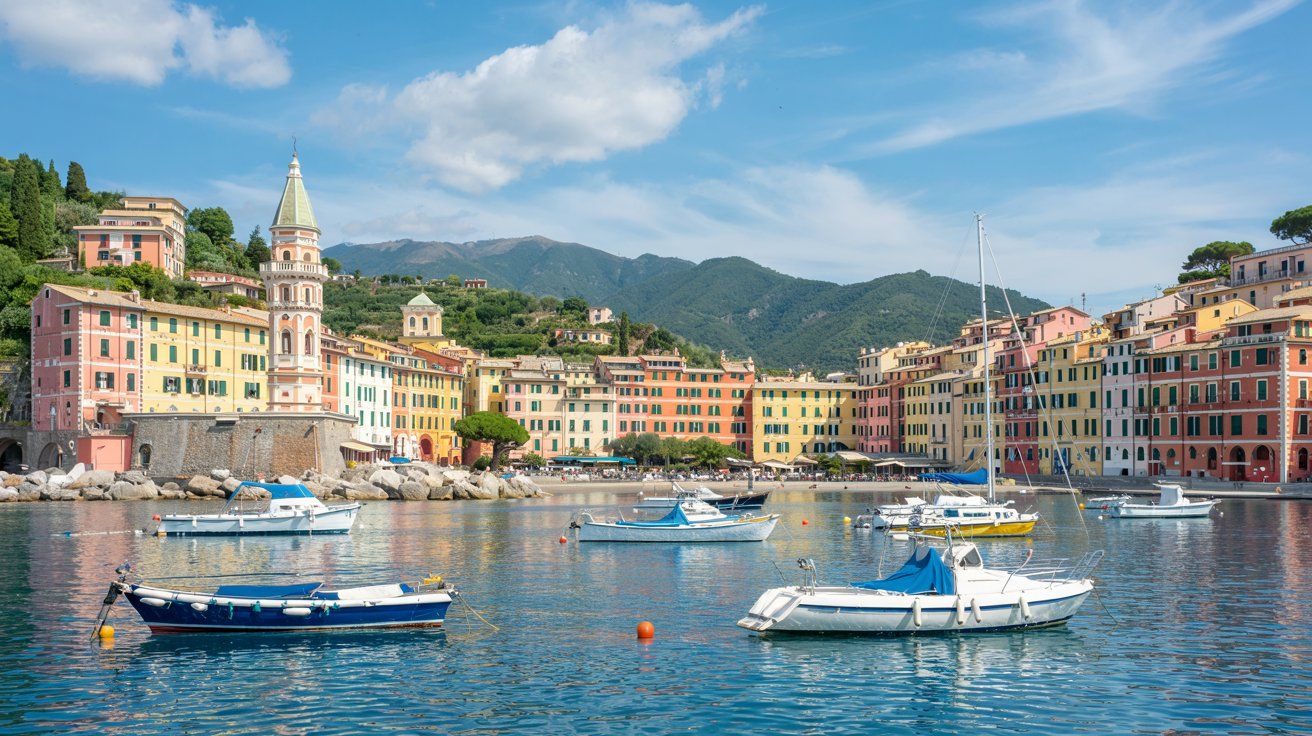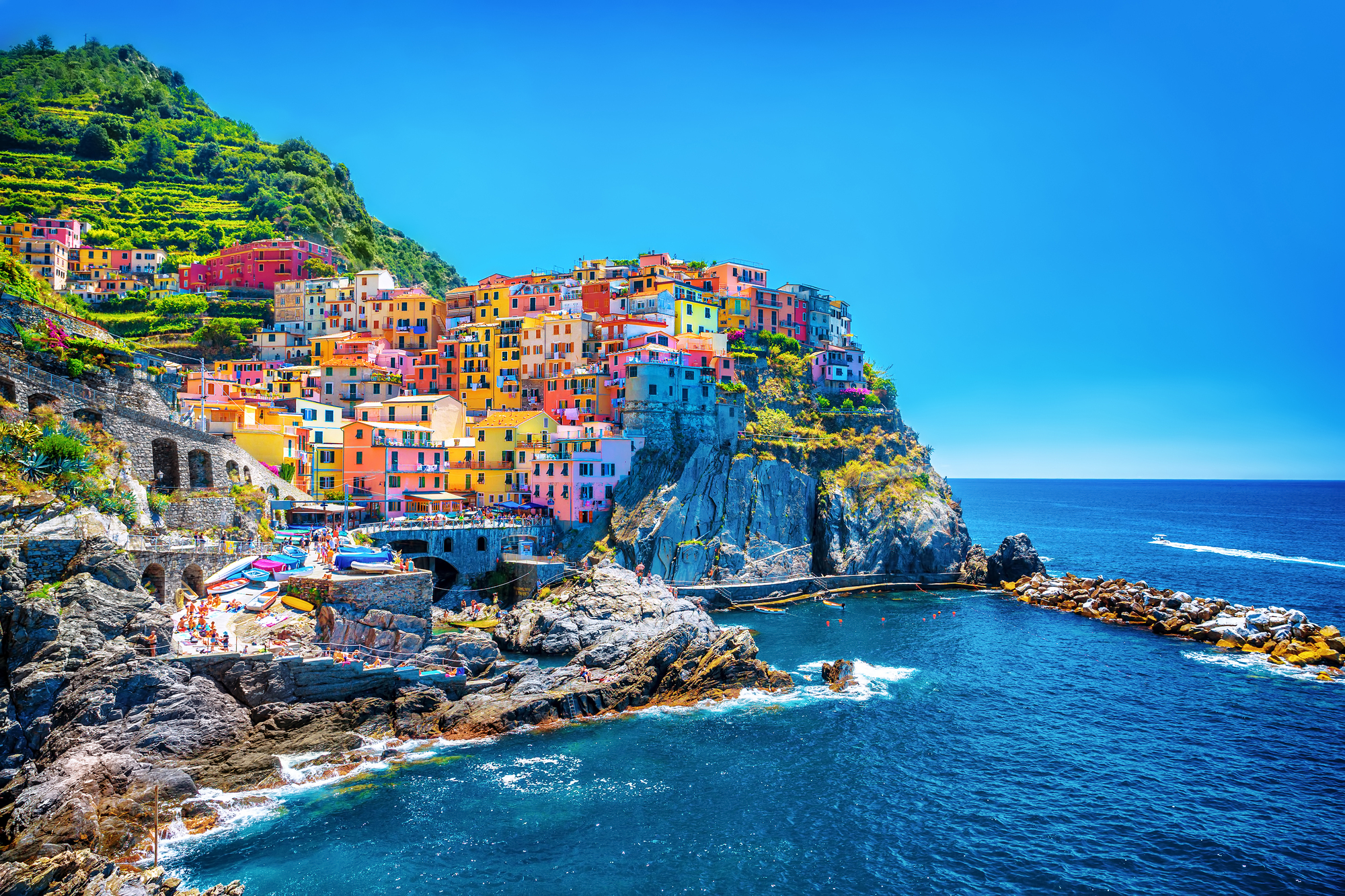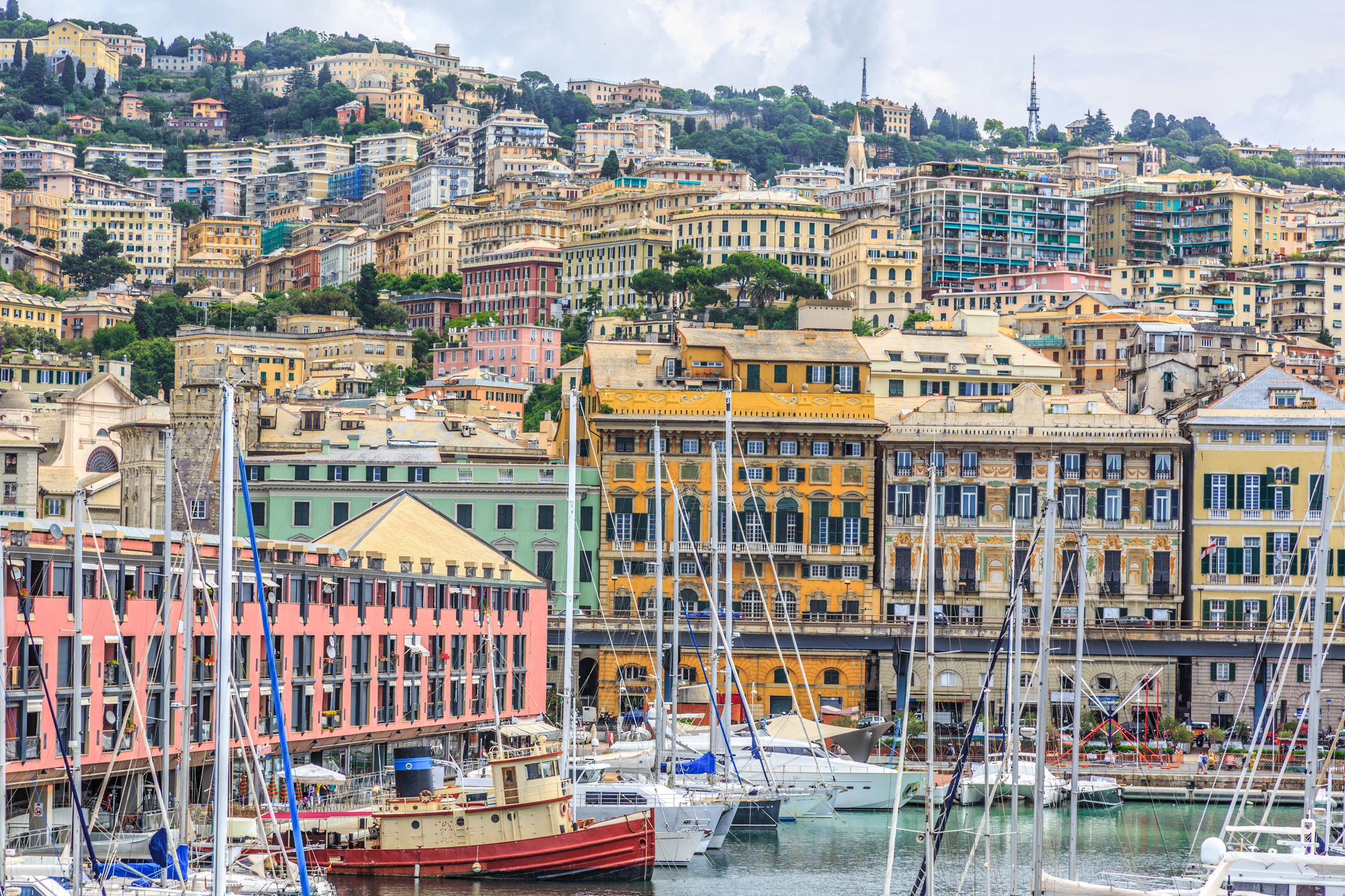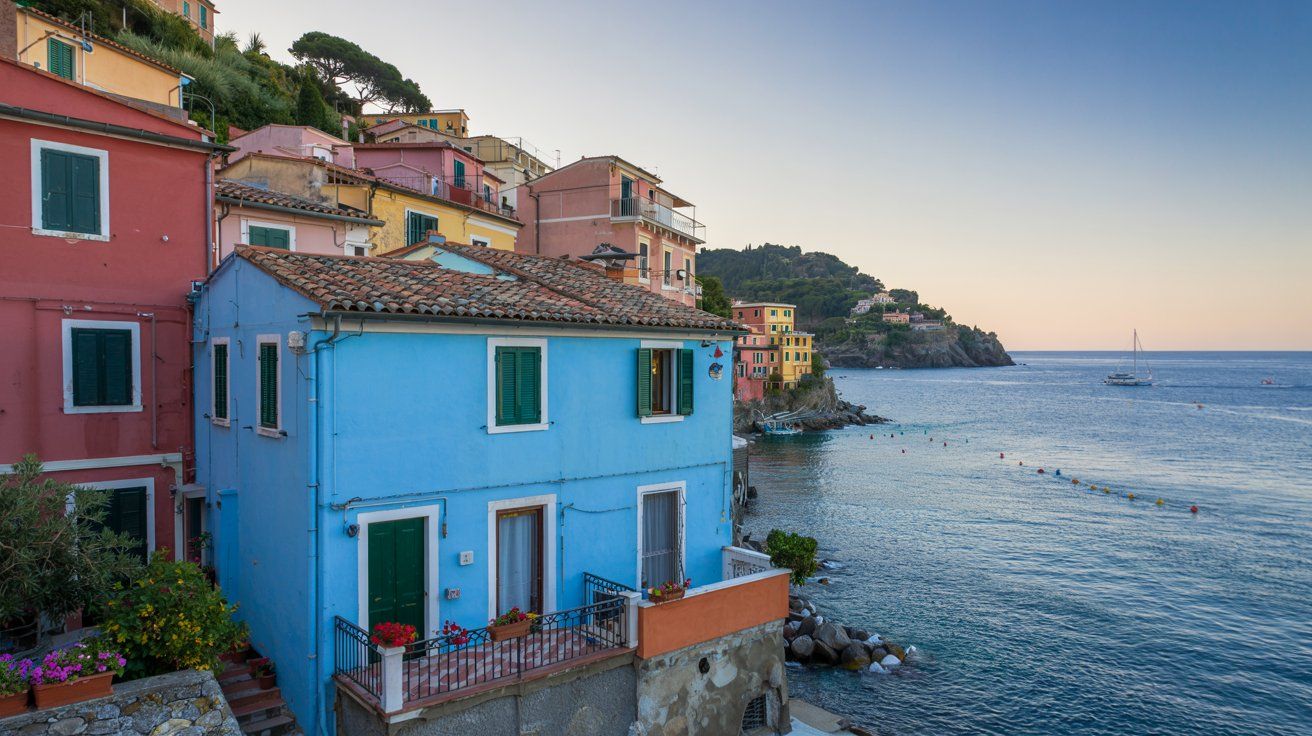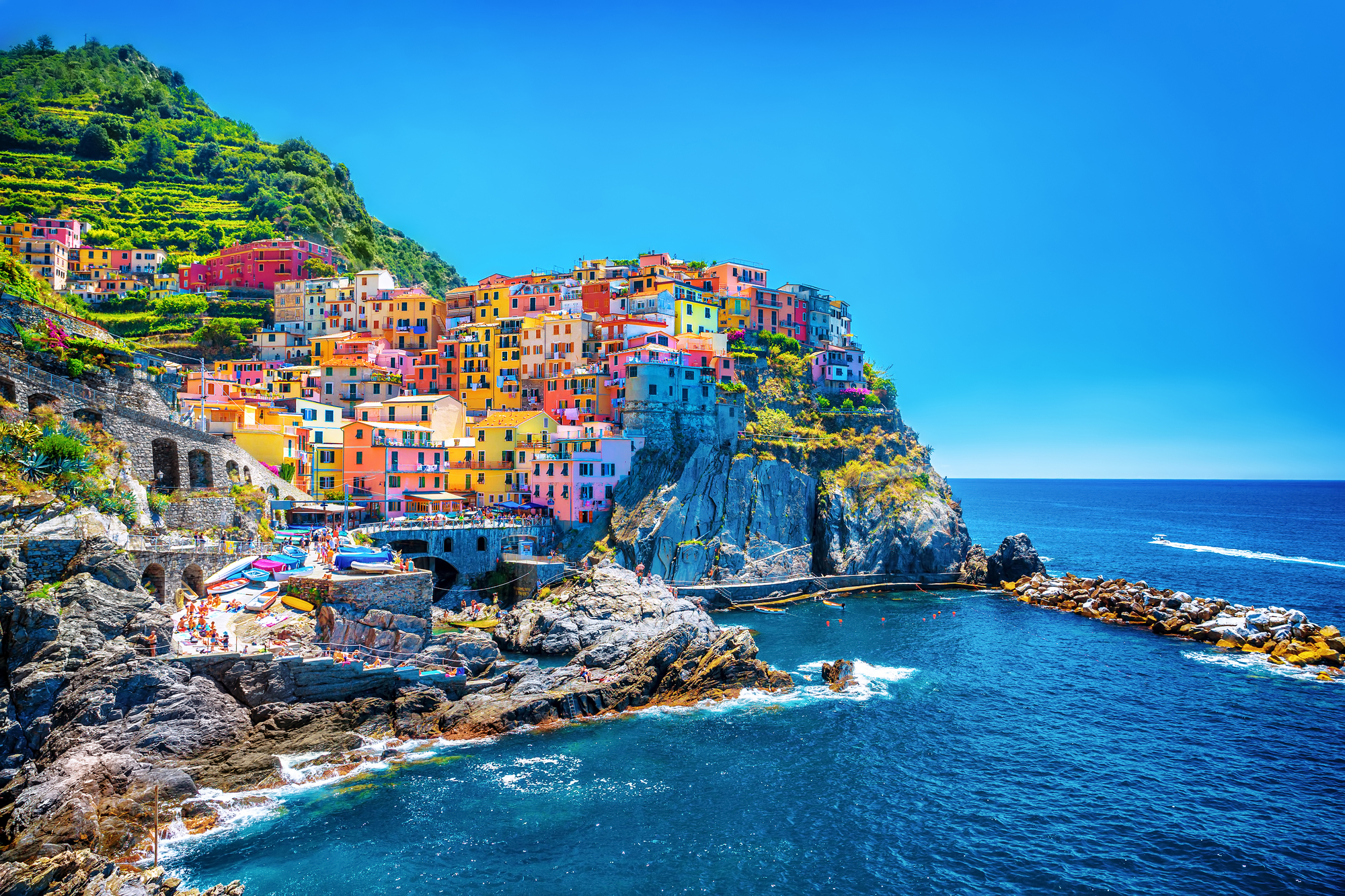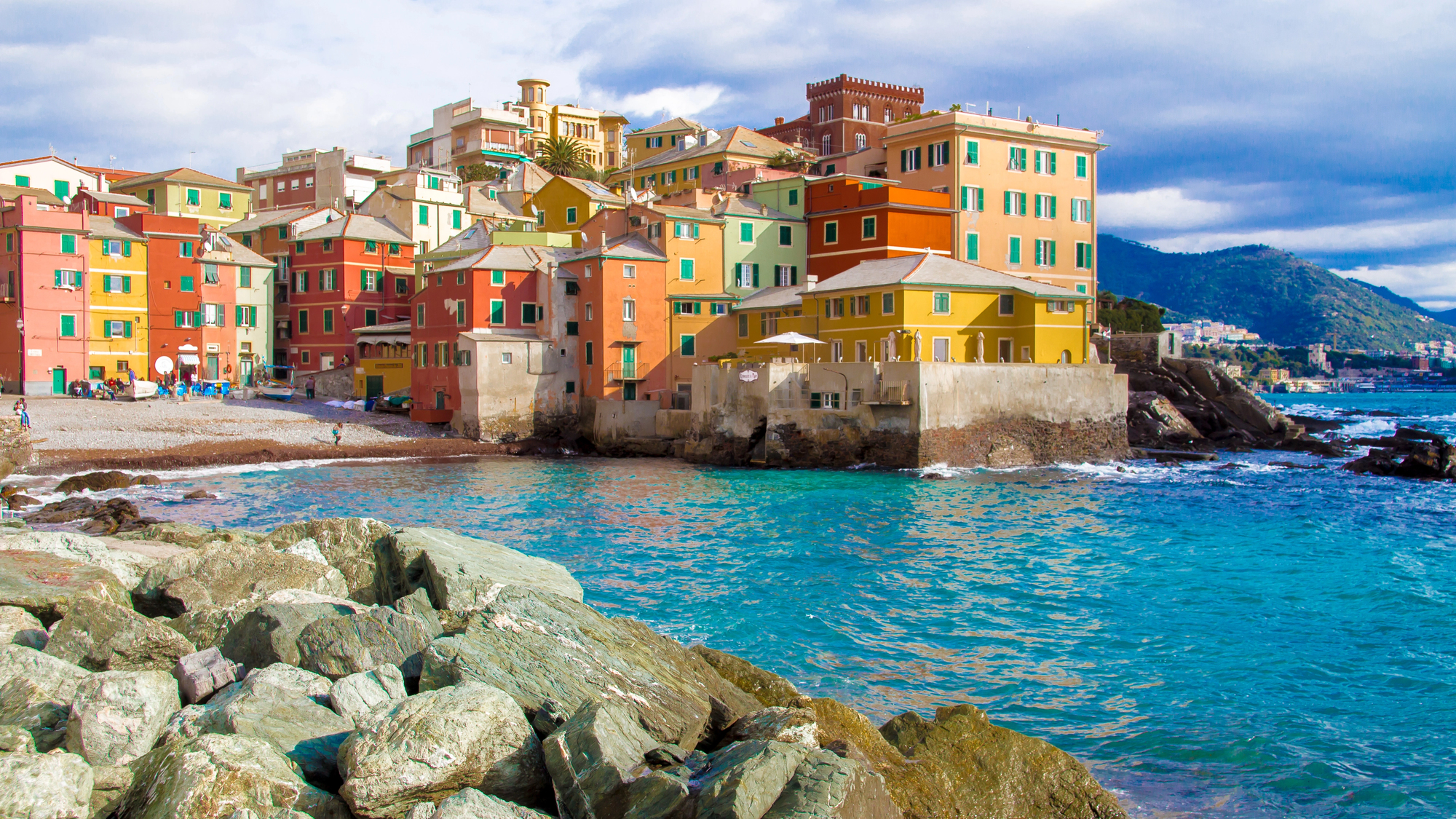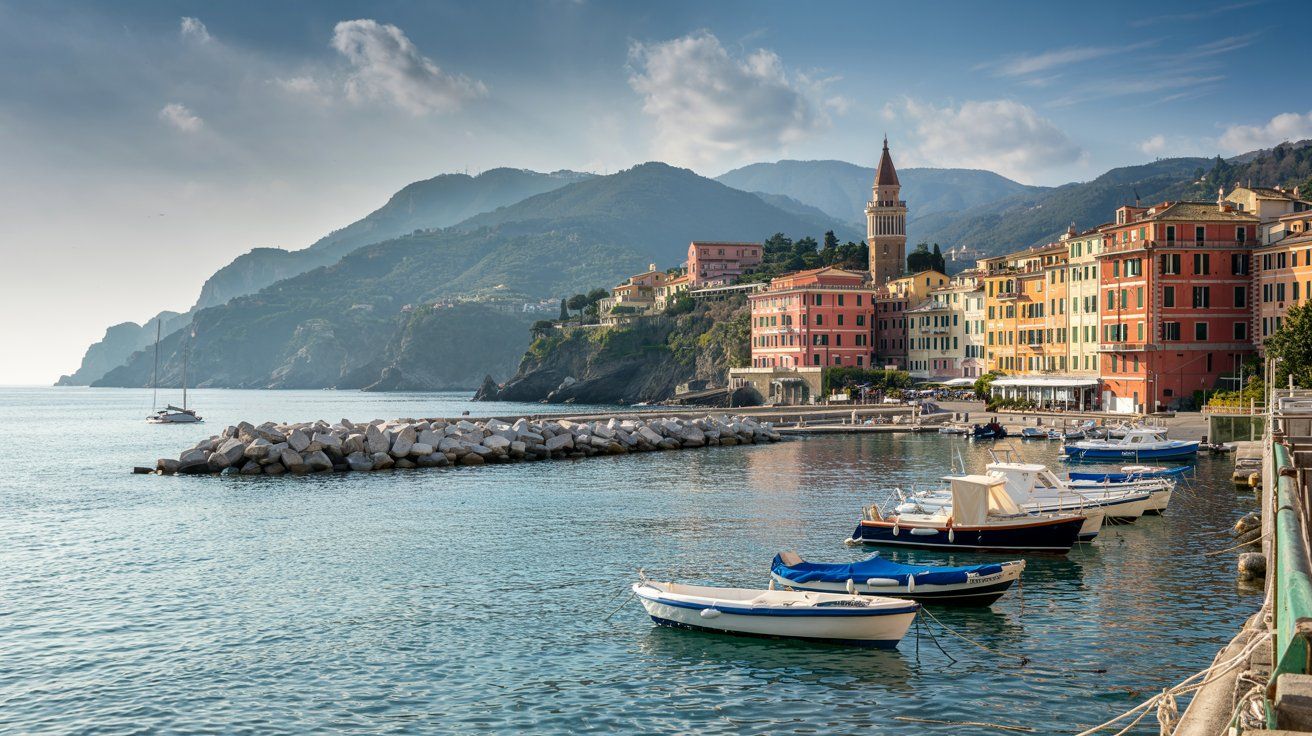Tucked away in the heart of San Remo on the Italian Riviera, La Pigna stands as a testament to the city’s medieval origins. Dating back to around the 11th century, this historic old town got its name (“The Pine Cone”) from its unique spiral layout that resembles a pine cone when viewed from above. La Pigna represents the original core of San Remo, with narrow winding streets and alleys that climb upward, creating a labyrinth of ancient pathways and surprising connections.
As you wander through La Pigna, you’ll discover the authentic pulse of San Remo that exists beyond the glitzy casinos and flower markets. This medieval quarter offers a striking contrast to the modern areas of the city, with its humble character and spontaneous charm making it feel like stepping back in time. The tight network of streets creates a village-like atmosphere where local life unfolds at a relaxed pace.
Get a discount of 15% to 70% on accommodation in the Italian Riviera! Look for deals here:
Italian Riviera Hotels, Apartments, B&Bs
When visiting San Remo on the Italian Riviera, La Pigna provides you with the most genuine glimpse into the region’s past. Starting at the Point of Sale, you can climb upward through this architectural marvel, where each turn reveals centuries-old buildings, unexpected squares, and stunning views of the Mediterranean coastline below. The beating heart of this Ligurian town invites you to get lost in its historical embrace and discover the roots of San Remo’s rich cultural heritage.
History Of La Pigna Old Town
La Pigna, the historic heart of Sanremo, dates back to around the year 1000. This charming old town got its name from its unique layout, which resembles the scales of a pine cone (“pigna” in Italian).
The district began taking shape in the 11th century when residents built homes close together on the hillside. This tight arrangement wasn’t just for space – it helped protect people from attacks by sea raiders who frequently threatened the Ligurian coast.
As you wander through La Pigna’s narrow winding streets, you’re walking through centuries of history. The medieval core expanded outward over time, with each layer telling a story of Sanremo’s development.
The fourteenth-century Porta di Santo Stefano (Gate of St. Steven) marks the boundary between old and new Sanremo. This Gothic stone arch served as the original entrance to the historic center.
Throughout the Middle Ages, La Pigna developed as the main residential area for locals in the Province of Imperia. Families built their homes in concentric circles up the hill, creating the distinctive pine cone pattern visible today.
Despite modern development in Sanremo, La Pigna remains remarkably preserved. Many buildings maintain their original medieval architecture, making this district a living museum of Ligurian history.
Today, La Pigna continues to be the authentic soul of Sanremo. When you explore these ancient pathways, you’re connecting with traditions and daily life patterns established nearly a thousand years ago.
What To See In La Pigna Old Town
La Pigna, the historic heart of San Remo, offers visitors a maze of winding streets that resemble a pine cone’s scales. As you explore this medieval quarter, you’ll discover hidden gems at every turn.
The Chiesa Santo Stefano stands as one of the most important religious sites in the area. This church showcases beautiful architecture that reflects the rich history of the region.
For art and history lovers, the Museo Civico Palazzo Nota houses interesting local artifacts. With a high rating from visitors, this museum provides insight into San Remo’s past.
Don’t miss the Oratorio di San Sebastiano, a small but significant religious building tucked away in the labyrinth of alleys. Its simple exterior hides interesting historical details inside.
As you climb through the narrow passageways, you’ll reach viewpoints offering spectacular cityscapes of San Remo and the Riviera di Ponente coastline. These panoramic spots make the uphill walk worthwhile.
The Piccola Biblioteca della Pigna might be small, but it’s highly rated by visitors who appreciate its charm and collection.
La Pigna’s true appeal lies in its atmospheric streets themselves. Getting lost in the quiet alleys lets you discover small squares, ancient doorways, and steep staircases that tell stories of centuries past.
How To Get To La Pigna Old Town
Reaching La Pigna, the charming old town of San Remo, is quite straightforward. If you’re traveling by car, take the A10 highway (Autostrada dei Fiori) which connects directly to San Remo.
From the modern part of San Remo, you can easily walk to La Pigna. Start at the Porta di Santo Stefano (Saint Stephen’s Gate), which serves as the main entrance to this medieval neighborhood.
Look for Via Santo Stefano and follow it uphill. This cobblestone path will lead you into the heart of La Pigna’s maze-like streets. Don’t worry about getting lost—that’s part of the experience!
If you prefer public transportation, local buses run throughout San Remo and can drop you near the entrance to the old town. This is a good option if you want to avoid the uphill walk.
For those staying in nearby hotels, La Pigna is typically just a short distance away. Most accommodations in San Remo are within 15-20 minutes walking distance from this historic district.
The journey up through La Pigna itself is part of the adventure. As you climb higher through the narrow alleys, you’ll eventually reach the Giardina Regina at the top—offering spectacular views of the city and Mediterranean Sea below.
AI: La Pigna Old Town in San Remo, Italy
La Pigna Old Town Visitor Information
To visit La Pigna, start at Porta di Santo Stefano, the 14th-century gateway that separates the old city from the new. This medieval entrance marks the beginning of your journey into Sanremo’s historic heart.
La Pigna can only be explored on foot. Wear comfortable shoes as you’ll be walking up narrow streets, alleys, and stairs. The neighborhood’s name means “pine cone,” reflecting how the buildings are tightly packed together on the hillside.
The best time to visit is early morning or late afternoon when temperatures are milder. Summer months (June-August) can be quite hot while exploring the steep pathways.
Your exploration should lead you upward through the winding alleys toward the sanctuary of Madonna della Costa, the main religious building at the top of La Pigna.
Visitor Tips:
- Allow 2-3 hours for a complete exploration
- Bring water, especially in summer
- Take a camera for the unique architecture
- Many shops close for afternoon siesta (1-4 PM)
Visitors consistently praise La Pigna’s authentic charm. As one reviewer noted, “The old town is very interesting and haunting, with so many alleys to explore.”
Several small cafés dot the neighborhood, offering perfect rest stops during your climb. Try local Ligurian specialties like focaccia or pesto dishes for an authentic experience.
Where To Stay Near La Pigna Old Town
Finding the perfect place to stay near La Pigna Old Town in San Remo gives you easy access to this charming medieval quarter. Several excellent hotels are within walking distance of this historic area.
The Best Western Hotel Nazionale offers comfortable rooms close to La Pigna. This hotel provides a convenient base for exploring the old town’s narrow streets and hidden corners.
Royal Hotel Sanremo is a luxurious option for travelers seeking upscale accommodations. Its elegant rooms and beautiful gardens make it a peaceful retreat after a day of sightseeing.
For those wanting to stay right at the foot of La Pigna, there are charming apartments available. These accommodations in the Italian Riviera often feature traditional Ligurian architecture and provide an authentic experience.
The Hotel Alexander is another great choice near La Pigna. Its central location makes it easy to visit both the old town and San Remo’s famous casino.
Residence Dei Due Porti offers apartment-style accommodations, perfect for families or longer stays. You’ll appreciate having more space while remaining close to the medieval center.
Budget-conscious travelers might consider Hotel Piccolo Paradiso or Hotel Rio Sanremo. These more affordable options still put you within easy reach of La Pigna’s attractions.
For a truly special stay, Miramare The Palace combines historic charm with modern amenities. The views of the Mediterranean from this property are simply stunning.
Things To Do Near La Pigna Old Town
Just steps from La Pigna’s medieval charm, the Madonna della Costa Sanctuary awaits. This striking church sits high above town, offering breathtaking views of San Remo and the Mediterranean. The walk up is perfect for couples seeking romantic vistas.
The Ariston Theatre, home of the famous San Remo Music Festival, is nearby. Music lovers and friends can check if any performances are scheduled during your visit.
Try the Pista Ciclabile (Cycle Path), a beautiful coastal route perfect for solo travelers or groups. Rent a bike and enjoy sea views as you pedal along the former railway track.
Business travelers might enjoy a sophisticated evening at the San Remo Casino. This elegant Belle Époque building houses gaming tables and sometimes hosts cultural events.
For a unique day trip, visit Bussana Vecchia, an ancient village reborn as an artists’ colony after an earthquake. It’s filled with studios and workshops where you can purchase one-of-a-kind souvenirs.
The San Remo Port offers upscale dining options and yacht-watching opportunities. Perfect for a relaxing afternoon with friends or a romantic dinner.
Don’t miss the Russian Orthodox Church, an unexpected architectural gem with its distinctive onion domes. It’s a quick visit but offers interesting contrast to Italian buildings.
Local markets near La Pigna provide authentic shopping experiences. Tuesday and Saturday mornings are best for exploring these lively gatherings of local vendors.
Get a discount of 15% to 70% on accommodation in the Italian Riviera! Look for deals here:
Italian Riviera Hotels, Apartments, B&Bs


